How much Should I eat during a trail race?

Chatting a to a running friend who had completed her first 3 Peaks Race in the UK, her own experience resonated so much with my own; she hadn’t got her food intake right and felt she could have run far better had she fuelled better. As general guidance most articles and books I have read advise 30g to 60g of carbohydrate per hour, or 100 to 300 calories per hour if you prefer. However, there are many variables that come in to play: your size, how much of you is muscle, how much is fat, how you have trained, the intensity, as well as the length (in time) of your run. In addition to this some trail races are more like an all over body workout, where you might be scrambling; it may be a multiday event like the OMM in which you have a period of camping before starting again the next day.
How much to eat?
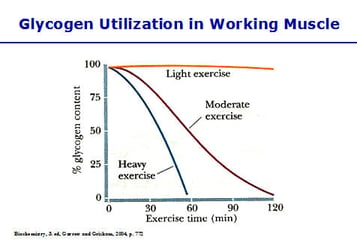
As the table above shows, the amount of glycogen (muscle energy) you use and the length of time you can continue without refuelling is dependent on the intensity as well as the length of the exercise. In thinking about how to fuel your run you need to consider how intense your exercise is going to be and how long you are going to be out for. This is key when it comes to racing, as you may do your long runs at a far steadier pace than you plan to race. Training at different paces not only helps with all round fitness but gives you the opportunity to try eating different foods at different intensities.
So how do I know what’s right for me?
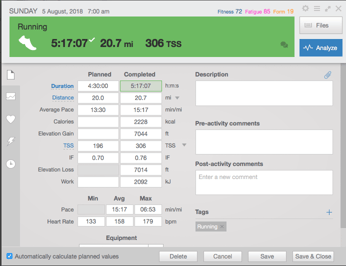
There are tests you can do which will help you see how much you expend in each of your training zones. Equally, if you use a training app like TrainingPeaks, this will show you how many calories you consume in each session and you could aim to consume 15-25% of your hourly consumption. If you look at the work out summary from one of my races last year you can see that I burned 2228 calories over just over 5 and a quarter hours, so ideally I could aim to consume 106 calories per hour. BUT as you can see, I did not perform as planned (I had planned to finish in 4 hours 30), so if I had simply carried enough food with me to last for the planned race time I would have been short. Also if you compare my calorie consumption for the race with my last long training run you can see that for that run I was consuming fewer calories per hour.
So how do you work out what is right for you? The overwhelming advice is to test and see; be your own personal scientist and find out what works for you. Training is the best time to test what works for you so that when it comes to race day you can be confident that you can fuel your race efficiently.
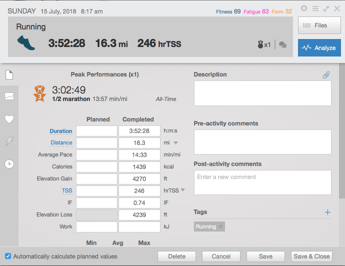
Most sports gels and bars will tell you how many grammes of carbohydrate is in each bar so you can keep good track of what you are eating and what changes you have made. With real food this requires more research. The main thing is finding what works, even if you’re not into measuring grammes of carbohydrates or counting calories, having a way of measuring what you eat which is consistent to you will help you find the perfect balance.
Small changes can be significant; I recently found that having half of my usual bar every half hour was much better than having one third of a bar every half hour – this was a small change but it has left me feeling much more energetic towards the end of my long runs.
When to eat?
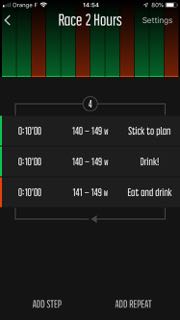
It’s difficult and often impossible to recover from a total depletion during a race so you need to start eating before you reach the limit. Little and often is the key; athletes will eat anywhere from every 10 minutes to every 45 minutes. This requires discipline at the start, especially when you are still full of the excitement of the start and feeling good. You can set your watch to bleep to remind you to take on fuel (and water) as I have done below.
I have discovered that every 30 minutes is about right for me BUT if I feel hungry/lacking in energy before then I have learnt to listen to my body and eat. Part of being your own scientist is learning how your body feels and how to respond to different feelings, even in the excitement of a race!
The difficulty with longer races is that it becomes harder and harder to digest food as the race goes on and this can leave some runners feeling sick. The trick here is to keep getting the calories in; even if this means swapping solid for liquid food. The more you practise this in training runs the more you are likely to be adapted to eating and less likely you are to have an upset stomach. That said, having a plan for if you do start to feel sick will help you deal with the situation if it arises and may mean it doesn’t sabotage your race.
What to eat?
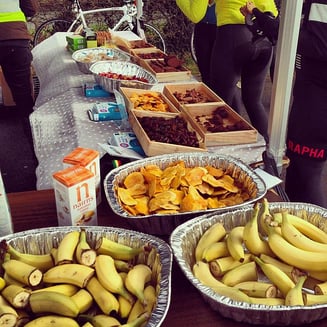
Most articles I read to research this blog recommend carbohydrates as the main source of fuel. However, for those of you who have read my blog on racing whilst having your period, you will know that during certain times of the month women’s bodies will metabolise fat more readily than carbohydrates. In addition to this, the fuel that your body will turn to depends on many things, including how you have trained, how hard you are running and how long you are running for (as well as where you are in your cycle if you are a woman).
As a rule of thumb, combinations of fructose and maltodextrin work well as carbohydrate fuel as they are easily accessible for your body, maltodextrin in particular is good for longer distances as it is kinder to your stomach. However, this can leave you with a lot of hours with sweet snacks, which can become too much for some people.
So, again, be your own personal scientist and experiment with things that work for you; whilst some athletes swear by a certain brand or product, others will eat nothing but ‘real food.’ Some people seem able to consume gel after sweet gel for hours on end, others (like me) need to ring the changes and incorporate some salty, fattier snacks. Whatever you do, stick to what you have tried and tested on your big day, even small changes can make a big difference (my friend likes a certain brand of isotonic drink, but only in lemon flavour, orange makes her sick).
It’s usually good to have an emergency supply of something you know will work as a quick pick-me-up as well, not every race is perfect, but if you can find a quick fix to get you up that final tortuous climb it may save your race. Full fat coke has been a common one used amongst my friends – whilst not a good way to fuel a whole race, a quick caffein and sugar burst to get you through the last 2km might be just what you need. Certain gels also contain caffein so you could experiment with them also.
My own race food of choice for longer distances includes:
- aptonia energy date bars
- Peanut butter and marmite sandwich in flat bread or with bread I have flattened by hand, cut into quarters
- Flapjack (my own if I can be bothered to make it)
- Aptonia energy gel for an emergency pick me up.
- I also choose a hydration drink to take which includes some calories
Pre-Race
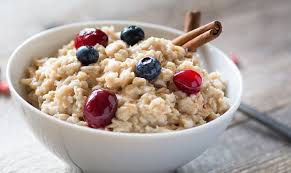
No race is going to go well regardless of the distance if you have not put the right fuel in beforehand.
For all races a good evening meal the day before then your last light meal two to three hours before the run will usually stand you in good stead; some people like a little snack in the last hour to top up stores.
For races over 90 minutes there is a lot of conflicting information out there around whether or not to ‘carb load’ (ie eat more carbs than usual) in the days leading up to the race. If you are following a training plan and have a proper taper before the race it is likely that eating your usual healthy diet with less exercise will give you enough extra carbohydrates.
However, the theme of this blog is be your own scientist – try out what works for you on longer training runs/harder sessions; if it’s tried and tested you know it will work on your key race day.
What should I eat after my race?
If you’ve raced hard, whatever the distance you will need to help replenish your muscles; the key to this is a mixture of carbohydrate and protein and hydration. Within half an hour of finishing any race (or hard session for that matter) I try and have some carbohydrates and a good source of protein (3:1 is a good ratio). There are lots of specially designed products and powders out there, but chocolate flavoured (plant based) milk can work just as well. Liquid recovery drinks have the advantage of getting you rehydrated at the same time.
What if I find I can’t eat?
A key part of training for me for my first marathon was to learn to eat and run. I really struggled at first and ended up just having small bites of energy bars in my mouth until they disappeared. I persevered however, and now have a list of foods that I can eat whilst I run, so keep trying different things until you find what works. Some people find that more liquid based foods are better (rice pudding, yoghurts); my dad used to eat, Horlicks, complan and a raw egg all mixed up together!
June 17, 2019

Comments